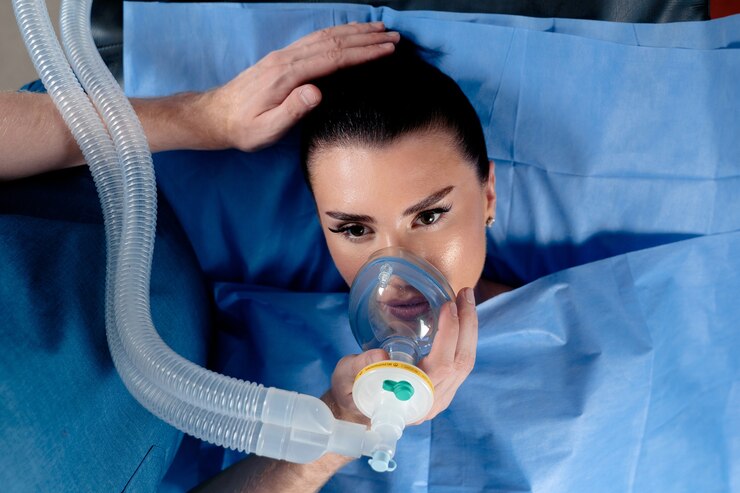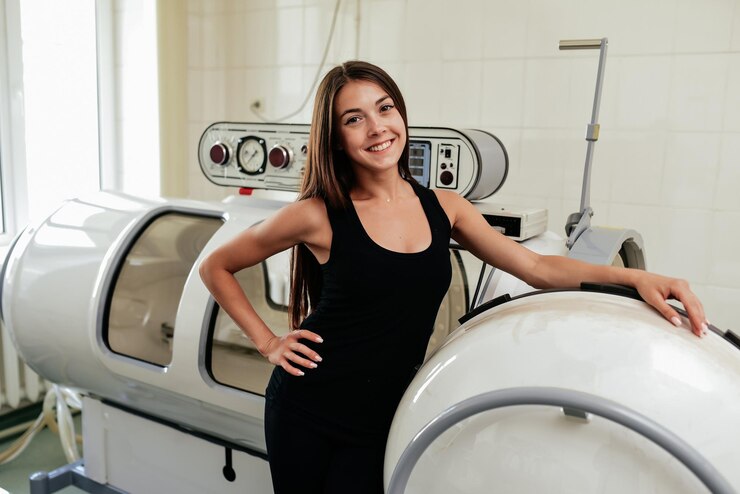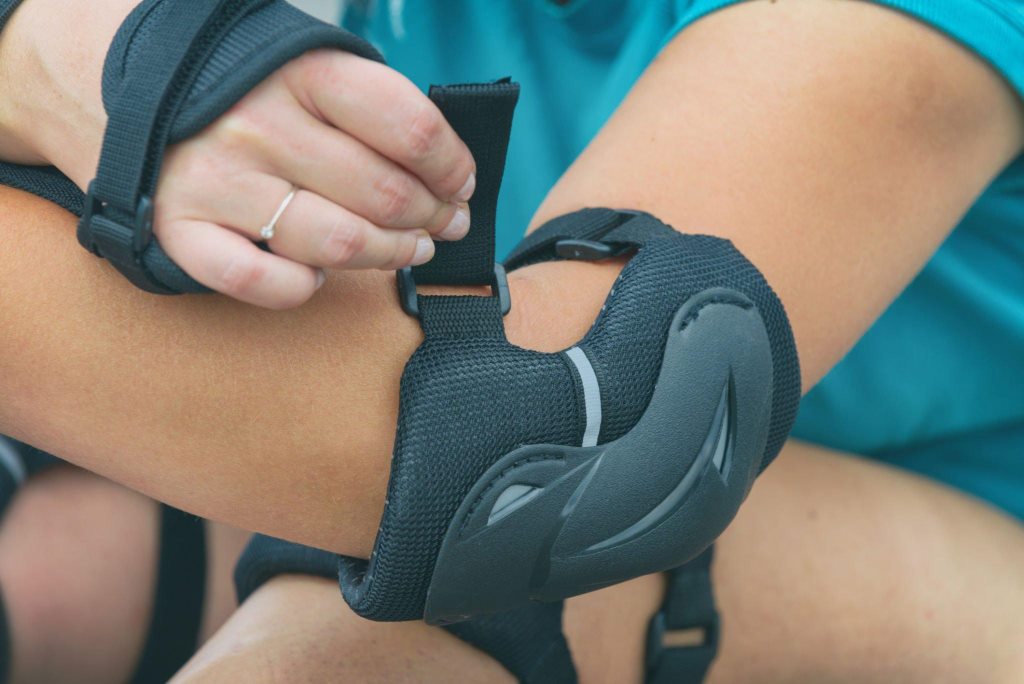In the realm of athletic performance and recovery, hyperbaric oxygen therapy (HBOT) emerges as a compelling adjunct to traditional training routines.
This innovative therapy involves breathing pure oxygen in a pressurized chamber, which can significantly enhance the body’s natural healing processes. For athletes striving for peak performance and expedited recovery, HBOT presents a groundbreaking approach.
This guide delves into the practicalities of integrating HBOT into your training routine, including optimal timing, session frequency, and what you can anticipate during treatment.
Understanding Hyperbaric Oxygen Therapy
HBOT is particularly valuable for those dealing with overtraining symptoms or recovering from sports-related surgeries, making it a favored tool among professional sports teams and elite athletes to maintain peak performance levels. This technique is particularly advantageous for athletes looking to improve their recovery times and boost their athletic performance.
Hyperbaric Oxygen Therapy from NextLevelHBOT offers a significant benefits for athletes by enhancing recovery and improving performance. By breathing pure oxygen in a pressurized environment, athletes can increase the oxygen saturation in their blood, facilitating quicker recovery from muscle fatigue and sports injuries.
This heightened oxygen level helps to reduce inflammation, accelerate repair processes, and boost energy levels, enabling athletes to train harder and recover faster.
The Rationale Behind HBOT for Athletes
For athletes, the appeal of HBOT lies in its potential to reduce recovery time, mitigate inflammation, and enhance overall athletic performance.
The therapy’s ability to increase oxygen delivery to tissues promotes faster healing of muscle fibers and reduces the downtime caused by sports-related injuries. Furthermore, HBOT has been shown to ameliorate muscle soreness and facilitate quicker return to training post-injury.
When to Incorporate HBOT into Your Training
Incorporate HBOT into your training during recovery periods, after intense workouts, or during injury rehabilitation phases to enhance healing, improve performance, and boost overall well-being efficiently.
1. Off-Season and Pre-Season
The off-season and pre-season periods present opportune moments for incorporating HBOT into your training regimen.
During these phases, the focus is often on building strength and endurance and addressing any lingering injuries from the previous season. HBOT can accelerate recovery from these injuries, ensuring you start the new season in peak conditions.
2. Post-Workout Recovery
Integrating HBOT sessions immediately following intensive training sessions or competitions can significantly reduce recovery time.
This timing takes advantage of the body’s natural recovery processes, further enhancing them with increased oxygen levels to repair muscle tissue and restore energy levels more efficiently.
3. Injury Rehabilitation
For athletes recovering from injury, HBOT can be a game-changer. Incorporating therapy sessions as part of the rehabilitation process can expedite healing, allowing for a quicker return to training and competition.
4. Frequency of Sessions
The ideal frequency of HBOT sessions varies depending on the athlete’s goals, the phase of their training cycle, and the specific conditions being treated.
A typical regimen might include sessions ranging from 3-5 times a week during intense training periods or injury recovery phases, tapering to 1-2 times a week for maintenance during less intensive periods.
What to Expect During HBOT
During HBOT, expect to relax in a pressurized chamber, breathing pure oxygen. Sessions typically last 60-90 minutes, promoting faster healing by increasing oxygen levels in your blood and tissues.
- Preparing for Your Session: Before entering the hyperbaric chamber, it’s important to wear comfortable, natural fiber clothing as provided by the treatment facility. Remove any metal objects and electronics, as these are not allowed in the chamber.
- During the Session: Sessions typically last between 60-90 minutes. As the pressure increases, you may experience a sensation similar to ascending or descending in an airplane. Chewing gum or swallowing can help equalize ear pressure. Inside the chamber, you can relax, sleep, or listen to music through the chamber’s communication system.
- Post-Session: After a session, it’s common to feel a bit more energized due to the increased oxygen levels in your body. There are no restrictions on physical activity post-HBOT, making it easy to integrate into any athlete’s training schedule.
Safety and Considerations
While HBOT is generally safe, it’s crucial to undertake therapy under the guidance of medical professionals. Potential side effects are rare but can include middle ear injuries, sinus discomfort, and, in rare instances, oxygen toxicity.
Selecting a reputable treatment facility and undergoing a thorough medical evaluation before beginning HBOT can mitigate these risks.
Leveraging HBOT for Mental Clarity and Focus
Leveraging HBOT can enhance mental clarity and focus by improving cerebral oxygenation. This heightened oxygen level supports brain function, potentially boosting concentration, cognitive performance, and overall mental wellness for athletes.
The Mental Edge
Beyond physical recovery and performance, HBOT has notable implications for an athlete’s mental well-being and cognitive function.
The increased oxygenation to the brain can potentially enhance mental clarity, focus, and reaction times—all critical elements for high-level performance in any sport.
Integrating HBOT sessions can serve not only the body but also the mind, providing a dual advantage for athletes looking to optimize every aspect of their performance.
Customized Protocols for Cognitive Enhancement
Developing a customized HBOT protocol with a focus on cognitive enhancement involves scheduling sessions during periods of intense strategic training or in the lead-up to competitions where mental acuity is paramount.
These sessions, while following the general guidelines for physical recovery, might be shorter in duration or less frequent, specifically tailored to sharpen mental focus without overexerting the athlete.
Incorporating Mindfulness and Relaxation Techniques Post-HBOT
Practicing mindfulness and relaxation techniques after HBOT sessions can extend their benefits, reducing stress and enhancing recovery by promoting a deeper sense of well-being and aiding in mental and physical rejuvenation.
Enhancing Recovery Through Relaxation
The period following an HBOT session offers a unique opportunity to engage in mindfulness or relaxation techniques, taking full advantage of the body’s heightened state of oxygenation and recovery.
Practices such as meditation, yoga, or simple breathing exercises can complement the physiological benefits of HBOT, promoting mental relaxation, reducing stress levels, and further enhancing recovery.
Building a Comprehensive Recovery Routine
Integrating these practices into the post-HBOT recovery process not only maximizes the physical and mental benefits of the therapy but also encourages a holistic approach to athlete wellness.
This comprehensive routine supports both immediate recovery needs and long-term health, ensuring athletes remain at the top of their game both physically and mentally.
Future Directions and Research in HBOT for Athletes
Emerging research on HBOT for athletes focuses on optimizing performance recovery, injury healing, and mental acuity. Future studies aim to establish standardized protocols and understand the long-term effects on athletic performance.
The Horizon of HBOT Research
As research into the applications of HBOT for athletic performance and recovery continues to evolve, so too will the strategies for integrating it into training routines.
Staying informed about the latest studies and breakthroughs in HBOT technology and methodologies is crucial for athletes and coaches looking to maintain a competitive edge.
Personalization and Optimization
The future of HBOT in sports lies in increasingly personalized and optimized protocols, tailored to the individual needs, goals, and responses of each athlete.
By closely monitoring the outcomes and adjusting protocols accordingly, athletes can maximize the benefits of HBOT, ensuring that this powerful therapy contributes effectively to their training, performance, and overall health journey.
Conclusion
Hyperbaric oxygen therapy offers a cutting-edge solution for athletes seeking enhanced recovery and performance capabilities. By understanding how to strategically integrate HBOT into your training routine, you can harness its benefits to achieve your athletic goals. Whether you’re looking to accelerate injury recovery, reduce post-workout recovery time, or enhance your overall performance, HBOT presents a promising addition to your training arsenal.
Always consult with a healthcare professional and a trained HBOT specialist to tailor the therapy to your specific needs and ensure the safest and most effective treatment plan.






